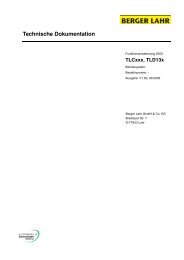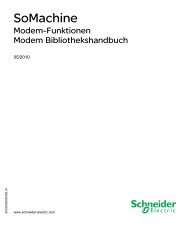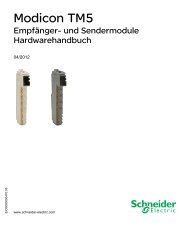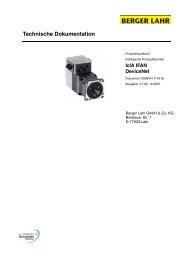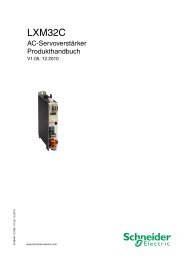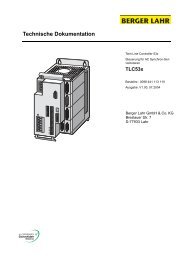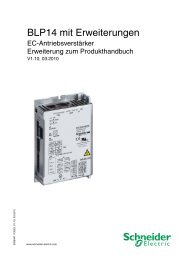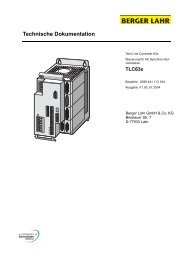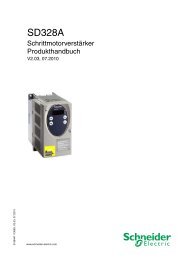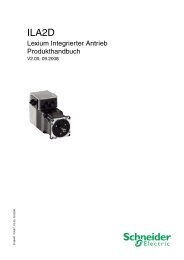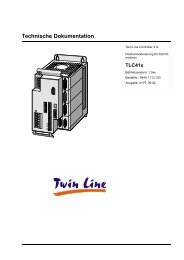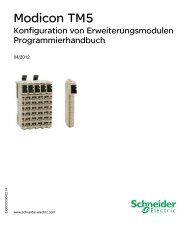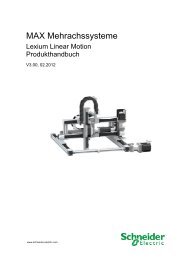Library manual M238 system functions | 2 MB - BERGER - POSITEC
Library manual M238 system functions | 2 MB - BERGER - POSITEC
Library manual M238 system functions | 2 MB - BERGER - POSITEC
You also want an ePaper? Increase the reach of your titles
YUMPU automatically turns print PDFs into web optimized ePapers that Google loves.
Glossary<br />
BOOTP<br />
BYTE<br />
CAN<br />
CANopen<br />
CFC<br />
controller<br />
The Bootstrap Protocol is a UDP network protocol that can be used by a network<br />
client to automatically obtain an IP address (and possibly other data) from a server.<br />
The client identifies itself to the server using the client’s MAC address. The server—<br />
which maintains a pre-configured table of client device MAC addresses and<br />
associated IP addresses—sends the client its pre-configured IP address. BOOTP<br />
was originally used as a method that enabled diskless hosts to be remotely booted<br />
over a network. The BOOTP process assigns an infinite lease of an IP address. The<br />
BOOTP service utilizes UDP ports 67 and 68.<br />
When 8 bits are grouped together, they are called a BYTE. You can enter a BYTE<br />
either in binary mode or in base 8. The BYTE type is encoded in an 8-bit format that<br />
ranges from 16#00 to 16#FF (in hexadecimal format).<br />
C<br />
The Controller Area Network protocol (ISO 11898) for serial bus networks is<br />
designed for the interconnection of smart devices (from multiple manufacturers) in<br />
smart <strong>system</strong>s for real-time industrial applications. CAN multi-master <strong>system</strong>s<br />
ensure high data integrity through the implementation of broadcast messaging and<br />
advanced diagnostic mechanisms. Originally developed for use in automobiles,<br />
CAN is now used in a variety of industrial automation control environments.<br />
CANopen is an open industry-standard communication protocol and device profile<br />
specification.<br />
The Continuous Function Chart (an extension of the IEC61131-3 standard) is a<br />
graphical programming language that works like a flowchart. By adding simple<br />
logicals blocks (AND, OR, etc.), each function or function block in the program is<br />
represented in this graphical format. For each block, the inputs are on the left and<br />
the outputs on the right. Block outputs can be linked to inputs of other blocks in order<br />
to create complex expressions.<br />
A controller (or “programmable logic controller,” or “programmable controller”) is<br />
used to automate industrial processes.<br />
82 EIO0000000364 04/2012



